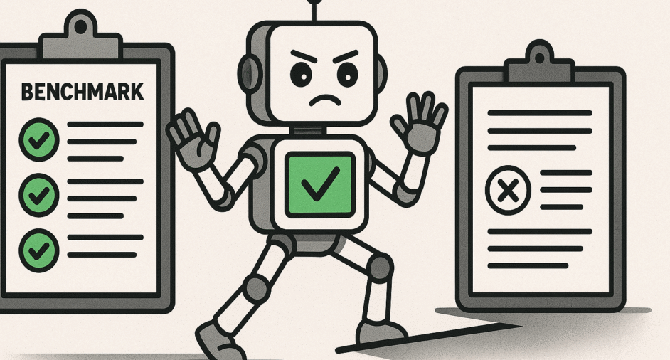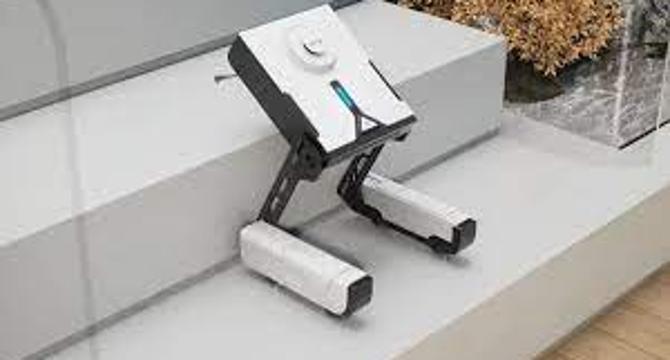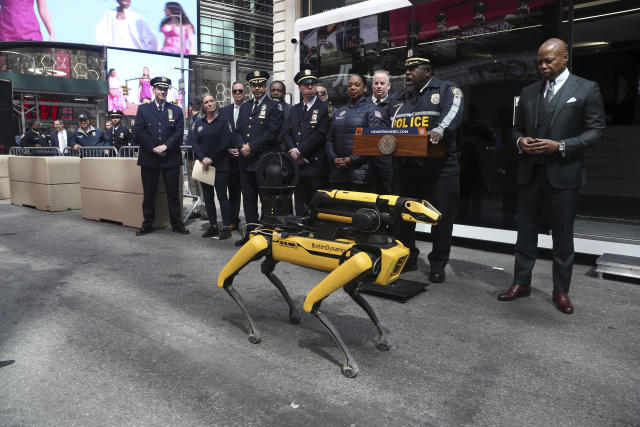Robotics News
The Robot Report
2M
263

Universal Robots releases the UR15, its fastest cobot yet
- Universal Robots has unveiled its fastest collaborative robot, the UR15, with a maximum TCP speed of 5 m/s to improve cycle times and productivity across industries.
- The UR15 offers up to 30% cycle time improvements for pick-and-place applications, maintaining the lightweight and small footprint design of UR cobots.
- Combined with OptiMove motion control technology, the UR15 ensures accurate movements in high-speed and high-payload applications.
- UR aims to boost collaborative automation with the UR15, offering seamless performance in diverse production environments.
- Despite facing sales challenges, UR has introduced leadership changes and the UR15 to enhance its position in the robotics market.
- The robot industry is facing pressures for automation due to labor shortages, demand shifts, and increased volatility.
- UR has been a leading cobot provider, recently surpassing 100,000 cobots sold and targeting industries like automotive, machining, and electronics with the UR15.
- The UR15 has a payload of 15 kg, expandable to 17.5 kg, and is designed for compact spaces, harsh environments, and precision applications.
- UR15 is AI-ready, running on PolyScope software platform and compatible with the UR AI Accelerator for developing AI-powered applications.
- The UR15 is available for pre-orders, shipping in June, and will be showcased at Automate 2025, demonstrating its capabilities for enhancing human-robot collaboration.
Read Full Article
15 Likes
The Robot Report
2M
60

SS Innovations to submit SSi Mantra 3 to FDA in July
- SS Innovations plans to submit a de novo classification request to the U.S. FDA for its SSi Mantra 3 surgical robotic system in July, featuring 40+ robotic surgical instruments for various specialties.
- The SSi Mantra 3 system offers a modular, open-console design with 3D visualization, integrated machine learning models, and has been used in over 3,800 surgeries, including cardiac cases.
- Real-world clinical data supports the safety and efficacy of the SSi Mantra 3 system for a wide range of surgical procedures, with plans for global expansion and FDA application in progress.
- SS Innovations aims to democratize access to healthcare with its cost-effective SSI Mantra 3 robotic system, which has received regulatory approval for remote surgery and teleproctoring.
Read Full Article
3 Likes
Unite
2M
235

Image Credit: Unite
Alexey Sheremetyev, Founder and Chief Product Officer at Planner 5D – Interview Series
- Alexey Sheremetyev, the co-founder and Chief Product Officer of Planner 5D, focuses on innovation and customer satisfaction.
- Planner 5D is a design platform using AI to create professional floorplans, 3D renderings, and virtual reality tours.
- It offers design tools and an Interior Design School to enhance users' spatial planning skills.
- Sheremetyev started Planner 5D in 2011 to bridge the gap between complex CAD tools and basic design apps.
- His background in UI/UX and product management shaped Planner 5D's user-friendly interface and business focus.
- The early challenges involved making the platform easy to use and cross-platform accessible.
- Planner 5D evolved from a basic 2D grid tool to a multiplatform solution with AI features like floor plan recognition and design automation.
- AI technologies like the Smart Wizard and Design Generator enhance design processes by saving time and inspiring creativity.
- Planner 5D ensures AI-generated designs feel personalized by allowing users to customize every element.
- In the future, Planner 5D aims to serve students, realtors, contractors, and professional designers through collaborative tools and AI advancements.
- Sheremetyev balances long-term vision with daily product priorities by aligning team goals and staying close to user needs.
Read Full Article
14 Likes
Discover more
Unite
2M
336

Image Credit: Unite
The Rise of Agentic AI: A Strategic Three-Step Approach to Intelligent Automation
- Agentic AI, the next evolution of AI, focuses on task execution rather than just providing advice.
- It can reduce customer support costs by 25-50% while improving quality and satisfaction.
- Companies need well-documented workflows and robust knowledge bases for successful adoption.
- Adopting agentic AI requires starting in the right place, balancing AI with human expertise, and tapping into an agentic network.
- Starting with high-volume automation offers the greatest ROI and efficiency gains.
- AI agents work best in narrow, defined areas and may not possess general intelligence.
- Balancing AI with human expertise is crucial for tasks requiring emotional nuance and complex decision-making.
- Companies should use agentic AI for transactional tasks and human expertise for high-stakes interactions.
- Establishing an agentic network with expert partners is essential for successful implementation.
- Agentic AI can enhance efficiency, customer experiences, and innovation if implemented strategically.
Read Full Article
20 Likes
Unite
2M
212

Image Credit: Unite
Time Tracking Has a Reputation Problem. Can AI Change That?
- Time tracking in the workplace often leads to tension and distrust due to traditional methods being seen as micromanagement instead of insightful tools.
- Many current time tracking systems are based on outdated assumptions of linear workdays, causing problems in tracking how time is actually spent.
- These systems tend to prioritize visibility and appearing busy over actual productivity, leading to inefficiencies in task prioritization.
- AI presents an opportunity to revolutionize time tracking by passively analyzing work patterns across tools, communication, and workflows.
- By observing behavior like deep focus and context switching, AI can provide real-time insights to boost productivity and prevent burnout.
- AI-powered tools like EARLY's AI time tracker offer a frictionless way to track time by adapting to individual work styles and automating the process.
- AI-generated data helps individuals and teams identify inefficiencies, improve workflow coordination, and mitigate risks of burnout.
- With AI, teams gain a clearer understanding of how time is utilized, enabling smarter decisions and proactive measures to enhance well-being.
- AI complements human judgment by providing data-driven insights to optimize time usage and promote intentional work practices.
- The aim of AI in time tracking is not to control time but to empower individuals and teams to use their time effectively and purposefully.
- Utilizing AI in time tracking may lead to a more human-centered approach to productivity, emphasizing the importance of protecting time rather than maximizing output.
Read Full Article
12 Likes
The Robot Report
2M
193

Waymo robotaxis to map Boston
- Waymo is sending a fleet of robotaxis with human specialists to map Boston's driving environment in May and June.
- Boston's intricate road network poses challenges with irregular intersections, heavy foot traffic, and diverse weather conditions for autonomous vehicles.
- Waymo is on a 10-city road trip across the U.S., exploring different urban settings to advance its autonomous driving technology.
- In addition to Boston, Waymo is expanding its robotaxi services to cities like Miami, Atlanta, and Washington D.C., and testing in Tokyo, while partnering with Toyota for autonomous driving.
Read Full Article
11 Likes
Unite
2M
373

Image Credit: Unite
Why Language Models Get ‘Lost’ in Conversation
- A new paper from Microsoft Research and Salesforce reveals that Large Language Models (LLMs) struggle significantly when instructions are given in stages rather than all at once, with performance dropping by an average of 39 percent across six tasks.
- Responses from prestigious models like ChatGPT-4.1 and Gemini 2.5 Pro fluctuate between near-perfect answers and failures based on how tasks are phrased, with output consistency dropping by over half.
- The paper introduces a method called sharding, breaking down prompts into smaller fragments to release them gradually into a conversation, reminiscent of a restaurant order or collaborative problem-solving.
- LLMs tend to generate lengthy responses even when incorrect or irrelevant insights are provided, leading to a loss of coherence in conversation.
- Starting a new conversation with an LLM rather than persisting in an unproductive one may yield better results due to the model getting 'lost' in ongoing exchanges.
- The study questions the need for separate interpretative layers between users and LLMs and emphasizes the necessity for LLMs to natively support multi-turn interaction.
- Experiments revealed that LLMs face challenges in multi-turn interactions, with models experiencing performance degradation and increased unreliability when instructions are fragmented.
- Models varying in size and performance showed similar levels of degradation in multi-turn settings, indicating that strong single-turn performance does not guarantee reliability across multiple turns.
- The study suggests that unreliability is a fundamental issue in how current models process evolving input and underscores the importance of considering multi-turn ability as a core competency in LLMs.
- Real-world readiness evaluations should extend beyond fully-specified benchmarks to assess how models handle fragmented input, highlighting concerns for agent frameworks reliant on sustained reasoning across turns.
Read Full Article
22 Likes
Pymnts
2M
87

Image Credit: Pymnts
Walgreens Reportedly Upping Use of Robot-Powered Pharmacies
- Walgreens is increasing its use of robots to fill prescriptions for its retail locations, with plans to have 11 micro-fulfillment centers serving over 5,000 stores by the end of the year.
- These centers handled 40% of prescription volume on average at supported pharmacies, filling around 16 million prescriptions per month at different sites.
- The use of robots allows more flexibility to bring down costs, increase care, and speed up therapy, giving Walgreens a competitive edge over some rivals.
- Other companies like Walmart, Albertsons, and Kroger are also utilizing micro-fulfillment facilities for dispensing grocery items and prescriptions, aiming to enhance customer service and operational efficiency.
Read Full Article
5 Likes
The Robot Report
2M
221

Orbbec designs Gemini 435Le to help robots see farther, navigate smarter
- Orbbec unveiled the Gemini 435Le at Automate 2025, offering enhancements for industrial applications and leading depth-sensing performance.
- The company is a provider of robotics and AI vision technology for various industries.
- Gemini 435Le provides long-range, high-precision sensing, reproduction of object edges, and configurable depth modes.
- The sensor supports multiple perception modes like AMR and Dimensioning Mode.
- It features IP67 protection, EMC testing, wide temperature range, and ESD Class A standards for industrial reliability.
- Orbbec announced partnerships with leading distributors to expand its global 3D vision ecosystem.
- The Gemini 435Le will be available for order in June 2025, aiming to broaden market reach.
- Orbbec will showcase its product portfolio and 3D vision platform at Automate 2025.
- The company aims to provide localized technical support and service through strategic partnerships.
- Orbbec designs solutions to empower robotics applications with advanced vision technology.
Read Full Article
13 Likes
The Robot Report
2M
13

Realtime Robotics launches Resolver for motion planning, simulation
- Realtime Robotics has launched Resolver, a cloud-based motion control system aimed at automating and accelerating the design and deployment of robotic workcells.
- Resolver tackles the challenges of robot path planning and collision avoidance, which typically involve extensive manual effort and time.
- The Resolver software integrates simulation for workcell safety and offers solutions for cycle-time optimization, interlocks, multi-robot coordination, and more.
- With Resolver, organizations can speed up workcell design processes from months to days, reducing engineering effort by 50% and improving overall throughput.
- Realtime Robotics aims to eliminate the complexity and inefficiency in the manufacturing industry by providing Resolver to enhance engineering and production processes.
- Resolver automates tasks such as path planning, simulation engineering, and can assist in various aspects of robotic cell functionality.
- The Resolver system is scalable, supports various simulation platforms, and enables users to work with multiple robots efficiently.
- Users of Resolver can expect rapid returns on their investment, with the software generating motion paths and interlocks with superhuman speed.
- Resolver streamlines industrial robotics programming and optimization, significantly reducing time requirements from months to hours.
- Realtime Robotics will showcase Resolver at industry events like Automate 2025 and Automatica 2025, offering demonstration environments for interested users.
Read Full Article
Like
Unite
2M
193

Image Credit: Unite
Beyond Benchmarks: Why AI Evaluation Needs a Reality Check
- Benchmarks have long been used to measure AI performance, but they may not fully represent real-world complexities and challenges.
- Over-optimization on benchmarks can lead to flawed models that struggle when faced with real-world scenarios.
- Standardized tests like ImageNet and BLEU simplify reality and may not capture the true value of AI.
- Benchmarks can overlook human expectations and fail to assess factors like fluency, meaning, accuracy, and truthfulness in AI models.
- The limitations of static benchmarks include challenges in adapting to changing environments, ethical considerations, and nuanced aspects of AI applications.
- Benchmarks often focus on surface-level skills but may not test deeper qualities like common sense reasoning and context appropriateness.
- The emergence of new AI evaluation approaches includes human-in-the-loop feedback, real-world deployment testing, robustness and stress testing, multidimensional evaluation metrics, and domain-specific tests.
- To ensure AI success in practical applications, evaluation methods should be human-centered, consider ethical implications, and test models under diverse and challenging conditions.
- The goal of AI evaluation should shift from achieving high benchmark scores to developing reliable, adaptable, and valuable AI systems that meet the demands of the dynamic real world.
Read Full Article
11 Likes
Minis
2y
1.1k

Image Credit: Minis
Meet The Ascender, the world’s first robot vacuum that can climb stairs
- Migo Robotics has developed Ascender, a revolutionary robot vacuum cleaner that can climb stairs. In a video demonstration, the robot showcased its ability to transform its shape and deploy two legs when encountering stairs.
- The innovative design of Ascender allows it to navigate staircases effortlessly, using its legs to climb each step while continuing to perform its cleaning functions. This unique feature sets it apart from traditional robot vacuum cleaners that are limited to flat surfaces.
- Migo Robotics proudly claims that Ascender is the world's first stair-climbing robot vacuum, representing a significant advancement in robotic cleaning technology and offering a solution for efficient cleaning in multi-level environments.
Read Full Article
24 Likes
Minis
2y
1.1k

Image Credit: Minis
New York police unveil 'Digidog', high-tech robotic police dog to fight crime
- The New York Police Department (NYPD) has introduced a robot police dog named 'Spot' made by Boston Dynamics to fight crime.
- Spot can help humans during crises, patrol dangerous areas, monitor construction sites, and communicate with people.
- The NYPD also deployed other latest technologies such as the StarChase system and the K5 ASR pilot for automated patrol in confined areas.
- However, the use of 'digidog' was previously cancelled after critics raised concerns about surveillance and weaponisation of the police.
Read Full Article
28 Likes
Minis
2y
539

Image Credit: Minis
Figure, a previously undisclosed startup, unveils images of its multi-functional humanoid robot
- Figure has unveiled a general-purpose bipedal humanoid robot, currently in testing at its Sunnyvale offices.
- The team is comprised of experts from Boston Dynamics, Tesla, Apple SPG, IHMC, Cruise, and Alphabet X.
- The robot's first applications will focus on manual labor tasks such as warehouse, manufacturing, and retail.
- The company's vision is to build horizontal hardware that can revolutionize multiple industries and scale to many applications.
Read Full Article
1 Like
For uninterrupted reading, download the app